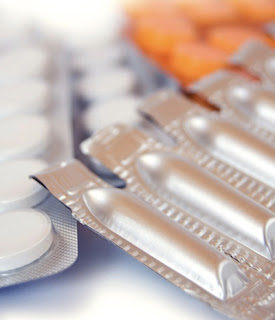 TRANSDERMAL DELIVERY
TRANSDERMAL DELIVERY
Transdermal
drug delivery as a route for systemic drug administration is currently
one of the advancing areas in drug development research.
This
is particularly true for the delivery of such drugs as opiate
painkillers, birth control, nitroglycerin for the prophylaxis of angina,
nicotine for smoking cessation therapy, testosterone for the correction
of male hypogonadism.
The skin route for systemic drug delivery is
especially attractive to formulators, as this integument is the most
readily accessible organ of the body. Clinicians are increasingly
recognising the advantages of controlled continuous intravenous infusion
of drugs, such as the avoidance of hepatic metabolism and the
maintenance of a constant therapeutic level in the body, that can be
obtained by the use of the skin as a portal of drug delivery, without
the risks and costs of intravenous therapy.
 INTRODUCTION
Developments
in transdermal, dermal and mucoadhesive drug delivery methods are
paving the way to the future of systemic drug administration.
INTRODUCTION
Developments
in transdermal, dermal and mucoadhesive drug delivery methods are
paving the way to the future of systemic drug administration.
As
skin is both the largest and most accessible organ in a human body,
pharmaceutical manufacturers are keen to take advantage of it as a drug
delivery platform.
The transdermal route helps to reduce the risks and costs of intravenous therapy that can be both traumatic and intrusive.
Transdermal
controlled release (CR) systems usually combine a therapeutic component
with an adhesive formulation that ensures a continuous delivery of the
active ingredient through unbroken skin at a constant absorption rate.
Skin adhesion and drug compatibility determine the efficacy of
transdermal applications.
 RECTAL DELIVERY
RECTAL DELIVERY
Although
administration via the peroral route is the most commonly targeted goal
of new drug and dosage form research and development, oral
administration is not always feasible or desirable.
The
potential for oral dosage form development is severely limited for
active agents that are poorly absorbed in the upper gastrointestinal
(GI) tract and unstable to proteolytic enzymes. Some agents cause local
stomach or upper GI irritation or require doses in excess of 500mg.
Additionally, treatment of some diseases is best achieved by direct
administration near the affected area, particularly with diseases
involving anorectal tissues. Although oral administration can be used
for drugs targeted for some of these diseased tissues, exposure of the
entire body compartment to the administered drug is inefficient and can
lead to undesired adverse effects.
VAGINAL DELIVERY
The vaginal route of administration offers a promising option for local and systemic delivery of drugs.
Suppositories,
creams, gels and tablets are commonly used vaginal drug delivery
systems. These conventional vaginal formulations, however, are
associated with limitations of poor retention, leakage, and messiness,
thereby causing inconvenience to users.
To overcome these limitations,
formulations that adhere to the vaginal mucosa for a sufficient period
of time need to be developed. Bioadhesion and retention are desirable
characteristics of a vaginal formulation to achieve desired efficacy.
These properties can be built in during formulation development by the
use of bioadhesive polymers and tested by similar methods to those
already discussed for bioadhesion. The limitations have also
necessitated the development of other novel drug delivery systems.
 TRANSDERMAL DELIVERY
TRANSDERMAL DELIVERY


